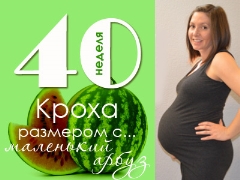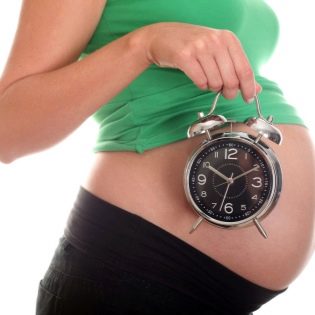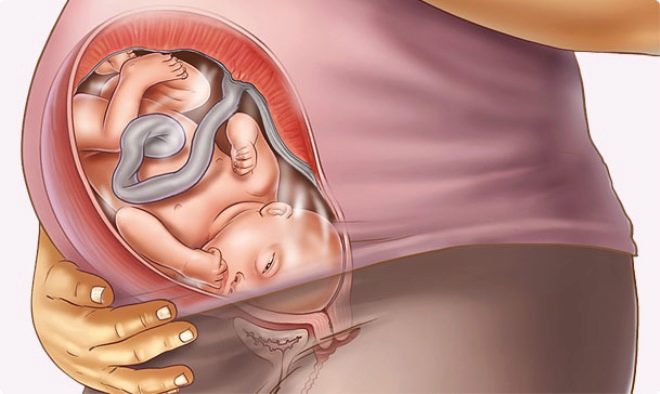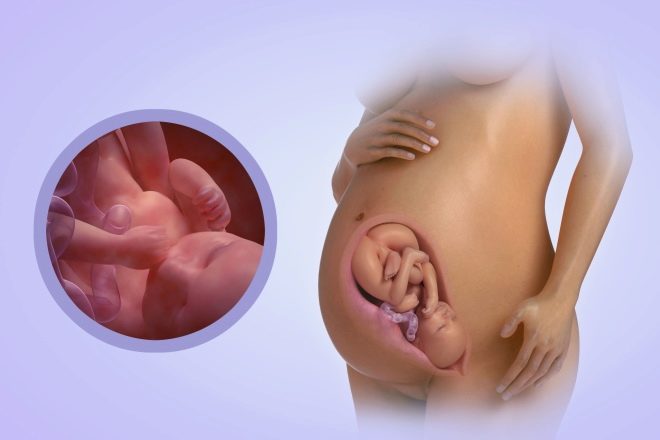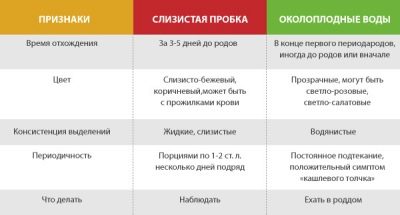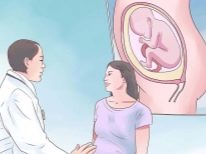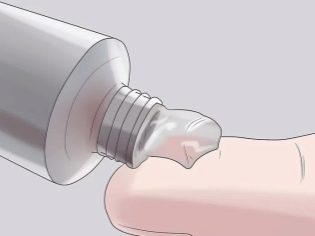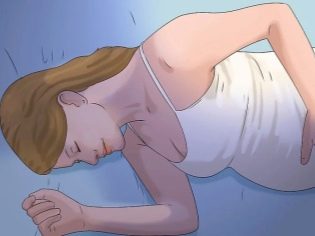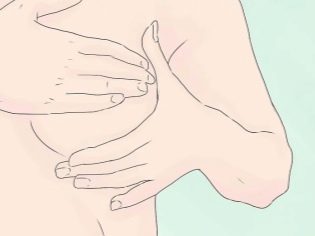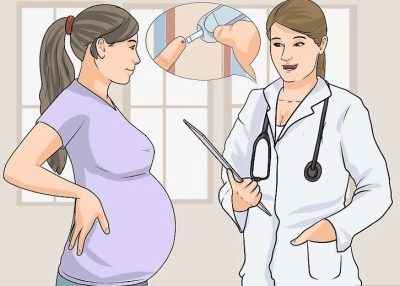40 week of pregnancy: what happens to the fetus and the expectant mother?
40 weeks gestation marked by waiting. Things in the hospital have long been collected, from day to day a woman is preparing to become a mother. What progress in development was achieved by the baby and what does his mother feel at this time, we will tell in this material.
How many months is it
Obstetric countdown takes place according to its own laws. The period of gestation is considered to be from the first day of the last menstruation. Thus, 40 weeks by the standards of obstetricians is exactly 38 weeks from conception. Pregnancy lasts for 280 days, at the end of the fortieth week will be exactly 9 months.
It is at the end of this week that the estimated date of delivery (DA) is scheduled, and it is not at all necessary that the baby “be asked” to our world on this very day. Only 5% of babies are born strictly in the DA.
For all others, the date range is quite large - from 38 to 43 obstetric weeks. But future mothers and their relatives, of course, are constantly waiting. By this week, they went a long nine months.
How was the baby?
The crumb for 28 weeks of embryonic development has come a long way, which, up to the details, repeats the whole process of human evolution. From a cellular structure, it turned into a multicellular, rational and developed being.
Fetal size
The size of the baby on this period depends on how the pregnancy proceeded, and on heredity. Some babies now weigh 2800 grams, and the weight of others has already exceeded 4 kilograms. Weight depends on gender (boys are somewhat heavier than girls), on the individual characteristics of the child.
On average, it is equal to 3.5 kilograms, and the growth of babies at this time can be 50 centimeters and 56 centimeters, everything also depends on heredity.
If an ultrasound scan is performed at this time, measurements will show that:
- bipariental size of the baby's head has become quite large - from 90 to 103 mm;
- frontal-occipital head size is 120 mm;
- the circumference of the abdomen is in the range from 313 to 380 mm;
- the hip length of the child at this time on average is 75 mm;
- humeral stones grew to 67 mm.
Stirrings
The amount of amniotic fluid that helped him to swim and tumble, when the baby’s height and weight allowed it, is now decreasing, the depreciation effect is no longer present, and this leads to the fact that the expectant mother begins to feel more clearly and sometimes painfully press legs, handles.
Women at this time often worry about reducing the number of apparent perturbations.Indeed, they should still be around 10 in 12 hours, while the baby is awake, but even subtle movements need to be counted, because now they are not always capable of more distinct crumbs because of the narrowness of the uterus.
Normally, the amount of movement by week 40 decreases. This is understandable, since the baby becomes very crowded in the uterus.
The walls of the uterus tightly wrap the baby, his posture is fixed, the head is pressed to the entrance to the small pelvis (with proper presentation). Therefore, the movements can now be felt as not too pleasant “stirring” at the very bottom of the abdomen.
Strong, active, exceeding the rate of perturbation, which causes pain and discomfort to the expectant mother - a reason for going to the doctor. This is how a child can signal oxygen deficiency, because the placenta has already begun to age due to its “age”, and the baby can receive less nutrients and oxygen.
Nervous system
The nervous system is one of the few whose development and formation at week 40 has not been completed, but is actively continuing. The brain and spinal cord are developed, they act, but more and more new neural connections are formed every day. The crumb does not make any chaotic movements with arms and legs, all his movements are completely “controlled” by the brain.
Debugging of the nervous system is a long process, it will continue after the baby is born. But the foundation has been laid, and already now the nervous system of a little man controls all the processes in his body, and there are enough processes in it. The baby at 40 weeks of well-developed sucking, swallowing and grasping reflexes.
Organs and systems
All organs and systems of the baby are fully formed. Heart crumbs beat rhythmically and evenly, pumping blood. The baby continues to swallow amniotic fluid, the stomach digests it, and the original dark green feces meconium is deposited in the intestine.
Empty the intestines of the child after his birth, the first day. Less often, emptying occurs even intrauterinely, this happens during hypoxia and is an indication for urgent delivery.
The liver produces hormones, and the underlying gland produces enzymes. The kidneys actively remove the liquid, the kid pees about once per hour directly into the surrounding waters, but they are updated, so the environment remains clean.
Light crumbs have accumulated a sufficient amount of a special substance - surfactant, it will not allow the alveoli to stick together, and the lungs will be able to open as soon as the baby takes the first breath. At week 40, surfactant deficiency is rare. The degree of readiness of the lungs can be assessed by ultrasound.
Sense organs
The child at this time hears well (as far as the thickness of the mother’s abdominal wall allows) everything that happens inside and outside. The sounds of my mother's heartbeat, the peristyle of her intestines are already familiar to the baby.
To the unfamiliar external sounds, the alien voices of the crumb can react with fear. At the same time, he either subsides and freezes, or begins to be active. The baby already has its own character, its personality is unique, individual, it manifests itself now.
Fully see the baby can not yet, despite the fact that the eyes in the womb opens. So far only a distinction of light and darkness is available to him. Outlines, outlines, colors - all this will come later, after the birth.
In the meantime, the baby knows for sure when day comes outside of my mother's belly, and when night falls. He already has his day regimen, and all pregnant women know about it. There is a time when a child is sleeping, and a time when he is awake.
Smells to the baby are not yet available, because in the full sense of the word, he still does not breathe, but he perfectly distinguishes taste. Taste buds on the tongue and cheeks work fully, and if the mother eats something sweet, after a while she can feel the activity of the child, because all children, even those who have not yet been born, love sweet.
Appearance
Gone are the days when the fruit was thin and wrinkled. For the third trimester, the baby has accumulated a sufficient amount of subcutaneous fat. The folds on his skin smoothed out, cute cheeks and plump palms appeared. The fluff, which had recently covered all of his body, is now missing.
The skin is smooth. Its rich red color changed to pinker, since the subcutaneous fat “removed” the network of blood vessels from the surface of the skin. Original grease, which was covered with a baby, disappears at 40 weeks. Its small amount is preserved only in places where friction is possible, for example, in the groin, in the folds under the knees, in the elbow bend.
Under the influence of female sex hormones, estrogens, which are produced before childbirth, preparing the future mother's body for the birth of a baby, the child's mammary glands and genitals swell a little, no matter what sex the child is. After the birth of this functional hormonal swelling gradually disappear as the child's body is released from residual maternal hormones.
Some babies at week 40 have thick hair on their heads, and some cannot boast with an abundance of hair. Both that and another is a variant of the norm. Hair and nails on this period continue to grow.
Metabolism and Immunity
The metabolism of the fetus at this time can proceed unchanged, habitually, and can change if the placenta, which performs the main function of delivering nutrients, vitamins and minerals to the baby from her mother's blood, begins to age and lose function.
Through the uteroplacental vessels, the child receives nourishment and through them also renders the metabolic products that have become unnecessary to him, which are already brought out by the mother’s body.
The immunity of the child works, but it is very weak. At week 40, there is an active exchange of antibodies - the mother gives the baby with blood antibodies to many viruses, infections, and diseases with which she recovered herself and from which she was vaccinated.
This immunity is unstable, it is enough to protect the baby only in the first months of independent life, then the baby’s immune protection will have its own “training” - due to vaccinations and past diseases.
What mom feels
The condition of the future mother on this period leaves much to be desired. The stomach is already big, it becomes harder to wear, the woman loses mobility. The wait state becomes intrusive and permanent. At any time of the day, the woman is ready to go up in alarm and go to the maternity hospital.
All this is not the best effect on her mood, many women develop insomnia, the causes of which are not only in the nervous factor, but also in changes in the hormonal background - now produces more estrogen and relaxin.
Due to the disturbed night sleep and raging hormones, the woman becomes more irritable, tearful, sensitive. Not excluded conflicts in the family. Relatives should have patience and understanding, because this state will last only a short time; some time after giving birth, the psychological background will begin to stabilize.
Mood is now spoiled and pain, and itching, which is accompanied by overstretching of the skin on the abdomen. Breast looks luxurious - it is big, fully ready for breastfeeding, from time to time it produces thick colostrum.
Pains
Pain this week can be striking in its diversity. Quite often, women complain that the back, back and pubic bone are sore. These pains are most often caused by a grown belly. The uterus now occupies the entire abdominal cavity, the fetus weighs fairly, the pressure on the womb is great.
Under the action of the hormone relaxin, the pelvic bones soften in the process of giving birth to provide the baby with easier passage through the birth canal. This discrepancy is physiological, but moderate painful sensations are possible.
It becomes difficult for a woman to climb stairs, to sit or stand for a long time, to sit down from a prone position, while walking, the pain in the pubic area may increase. If the intensity of the pain is low, and the woman retains the ability to move, do not worry.
If the movements are limited, the pain is acute and unbearable, you should consult a doctor to exclude symphysitis and pathological discrepancy of the pubic articulation.
Sometimes a woman may experience small pulling pains as during menstruation. It is also a natural process of preparing her body for childbirth. You should not be afraid of them, you just need to carefully “listen” to the nature, intensity, frequency of such sensations, in time to determine the beginning of contractions and calmly go to the maternity hospital.
Often pregnant women at week 40 complain that they have a headache. Headache in most cases occurs on nervesSince there are plenty of reasons for worrying about a future mom on this period.
Frequent and severe headache can be a sign of increased blood pressure, in such a case at home you need to have a blood pressure monitor to measure the level of blood pressure on both hands. If you increase you should call the doctor.
Often women at this time complain of pain when urinating. The cause can be cystitis, which has arisen due to the pressure of a large and heavy uterus on the bladder. For the same reason, the number of urge to urinate increases.
Another pain, which also often happens in week 40, is toothache. The teeth hurt due to the fact that the baby has taken a very large amount of calcium from the mother’s body over the past months. Against the background of its own lack of this mineral, pregnant women develop caries, periodontal disease can begin.
Dental treatment at 40 weeks is not the best solution, but if the pain becomes unbearable, it is better to turn to a dentist, because effective painkillers are not yet recommended for a woman.
Allotment
Normal at 40 weeks are considered transparent or light, odorless, non-abundant, odorless, not soiling clothes and daily pads. Gasket must be invested in panties in time to pay attention to the changing nature of the discharge., and they should change soon.
Thick mucous membranes may indicate that the cervix is preparing for childbirth. If the mucus gets a pinkish hue or brown mucus comes out, this may be a sign that the plug has come off. In the process of carrying a child from the very first hours after conception, the accumulation of mucus in the cervical cervical canal, which is called a stopper, prevented viruses, bacteria, and foreign bodies from entering the uterus.
Now, when the birth canal begins to expand, there is no longer any need for traffic. The mucus plug can come off at once, in a large clot, or maybe gradually, and this will be manifested by mucous secretions with a pink or brownish tinge.
Often women complain that the passage of the tube is accompanied by special sensations - pulls the lower back, "pricking" in the cervix. But not less often the cork leaves imperceptibly for the pregnant woman - during urination, in a dream or together with waters.
If the discharge has become abundant, watery and in intensity is not inferior to urination, it is a question of water withdrawal - it's time to call an Ambulance and go to the hospital without panic, even if there are no contractions.
If the discharge has become watery, but it is not abundant, then we can talk about the leakage of amniotic fluid. A more accurate answer to this question can be using special pharmacy tests for the determination of amniotic fluid.
Water leakage is not considered a physiological norm, it is not safe to stay at home., it is best to go to the hospital where a decision will be made on what to do next.
Spotting, blood clot smear is the basis for immediate hospitalization.Highlight greenish and dirty gray can talk about infection of the genital tract. A white cheesy discharge with a sour odor is a thrush, which often affects women in the later stages due to changes in hormonal levels.
Any discharge that does not fit into the norm, including thrush, will be grounds for a woman to be assigned to the observational department at the maternity hospital. There is nothing wrong with that, but it is better to avoid infections of the genital tract, since the baby, who will soon have to go through them, is very likely to be infected during the birth process.
Digestion
The enlarged uterus squeezes the intestines and gallbladder, and the stomach and pancreas are also pressed. All this can not affect the digestion of a pregnant woman.
At 40 weeks, almost all expectant mothers suffer from heartburn, constipation, and diarrhea to some degree. Since the digestive organs work in extremely cramped conditions, even a balanced and proper diet can cause nausea and even vomiting.
All these problems are related to the fact that gastric juice is thrown into the esophagus, the outflow of bile is difficult, food is digested with difficulty. That is why a woman is recommended to maximally facilitate the task of her own gastrointestinal tract and stop eating large amounts of meat, fish, milk and cottage cheese this week.
It is better to limit to mush-porridge, fruit, fresh raw and stewed vegetables.
Loose stool in the last days of pregnancy is often a sign of an upcoming birth. So the body, by the will of nature, is freed from all that is superfluous, which can interfere during the birth process.
Appetite at week 40 may be unstable. For many, it is completely absent, and for some, on the contrary, it rises, and a woman wants to eat everything at once. Weight gain at this time will be insignificant, not more than 100 grams per week. Many pregnant women note that it was at this time that they had a weight reduction of 300-500 grams.
A large increase in the 40th week can speak about the development of edemas, including internal ones, which are a great danger.
A woman is sick not only because of mechanical compression of the digestive organs, but also because of changes in the hormonal background.
Possible problems
Pregnancy is considered to be completely full-term, there are no longer any concerns for its safety. But no one is insured against problems, including at this time. Let's take a closer look at what problems may arise during the 40th week of gestation.
Late toxicosis
Late toxicosis develops in approximately 10% of women at the end of pregnancy. On the one that happens at the very beginning of pregnancy, it does not look like. A woman is no longer sick of the sight of herring or the smell of gasoline. Now toxicosis is expressed in violation of water-salt balance, appetite, urination, edema.
The true cause of this phenomenon medicine, unfortunately, is not known. The complex of possible causes is considered only as an assumption. In women in the last days of pregnancy, disorders can occur on the basis of nerves because of experiences, and also because of the increased load on all organs and systems, and first of all - on the kidneys, liver, heart, and blood vessels. If symptoms of toxemia occur at a late date, you should always inform your doctor about this.
At week 40, it is wise to agree to hospitalization, since this is the way out that will be offered first. Under the supervision of doctors, the likelihood that toxicosis will cause complications decreases markedly.
Gestosis
This is a very dangerous complication of pregnancy, which often leads to the death of a woman and a baby at the very "finish line" - in the last days of carrying a child. Gestosis can manifest edema that a woman can not overlook - swelling of the face, arms, legs in the ankles.Swelling of the legs is to some extent inherent in all pregnant women at week 40, because the pressure of the uterus on the lower part of the body is tremendous, but the swelling of the edema is different.
If in the mornings there are small edemas, which completely disappear by dinner, then for this period it is considered quite acceptable.
However, persistent edema, accompanied by increased blood pressure, headaches, the appearance of protein in the urine - this is the reason for hospitalization and delivery as a matter of urgency. Such dropsy of pregnant women threatens the life of the child, since it increases the risk of sudden detachment of the placenta with abundant bleeding.
Edema may be invisible externally, internal. With such gestosis, the woman will experience hypertension and protein in the urine. That is why urinalysis at 40 weeks should be donated.
Presentation of the fetus
In the overwhelming majority of cases, by the 40th week the child occupies the head position in the uterus, that is, its head is pressed to the exit from the small pelvis, the baby is completely ready “to start”. If at this time his position in the uterus is different, then there is almost no chance that he will change it to the correct one - in the uterus it became too crowded to turn over, and the walls of the uterus clasp the baby’s body tightly.
With pelvic and transverse presentation, doctors try not to risk the health of the baby, for whom such births can result in severe disabling birth injury. If the previa is pelvic or transverse at 40 weeks, a cesarean section will be performed.
Usually it is carried out before the fortieth week, so as not to risk and prevent the occurrence of self-generic activity for a baby with an incorrect position in the uterine space.
But if for some reason the woman refused the operation, hoped that the crumb would "turn around", now is the time to go to the hospital to carry out this operation. If independent childbirth begins, the woman in labor will have to operate on an emergency basis.
Placenta and water
The placenta on this period ceases to grow, but still performs the functions assigned to it. How responsibly she does it depends on the degree of aging of the placenta. Usually it is the third. The thickness of the “children's place” at 40 weeks is normally 3-4 centimeters. It weighs a little over 500 grams.
If, according to the ultrasound, the thickness of the placenta is below normal, there are visible inclusions in it, this is the basis for delivery. A child with such a “childish place” lacks nutrition and oxygen; its further stay in the womb is inexpedient.
The amount of water decreases, because if it remained the same, pressure on the inside of the uterus, given the weight of the child, would be excessive, which could lead to rupture of the wall, injury to the cervix, loss of pregnancy.
Nature has thought of everything so that any increase is compensated by a departure, therefore the fruit grows and the water decreases. The amniotic fluid index at week 40 normally averages 123 mm. When reducing it below the mark of 63 mm, they say about the critical low water. Independent labor with it is impossible, a cesarean section is prescribed.
With an increase in water of more than 240 mm they talk about polyhydramnios and individually decide the question of delivery. Most often, the choice is also stopped on caesarean section.
Hemorrhoids and varicose veins
The pressure of the large and heavy uterus on the lower veins often causes an unpleasant and painful condition - hemorrhoids. Most often it manifests itself for the first time or becomes aggravated if it has happened before, just before the birth, when the load on the hemorrhoidal veins is maximum.
Hemorrhoids can be internal and external, with prolapse of nodes and without it. This condition cannot be ignored.. There are many medications that can quickly relieve the symptoms of an unpleasant disease, many of them are not forbidden to use in the third trimester.
Treatment will definitely need to continue after childbirth, since such a late hemorrhoids rarely manage to win completely until the baby is born, and the birth process only intensifies the manifestations of hemorrhoids.
Another consequence of a blood supply failure due to uterine pressure is varicose veins. Fully curing it before delivery is quite difficult, but you can relieve the symptoms with the help of venotonic preparations of both systemic action and for local use. Treatment should also begin after the baby is born, if symptoms persist.
Symphysitis
If a woman has previously been diagnosed with symphysitis, childbirth or cesarean section (depending on the severity of the divergence of the symphysis), it is prescribed for earlier periods (38-39 weeks). If the diagnosis of a symphysitis is made only now, the hospitalization is shown to the woman. In a hospital, they will make a decision on delivery, as well as provide anti-inflammatory and analgesic symptomatic treatment.
The diagnosis can be made by ultrasound of the symphysis, as well as measurements of the parameters of the small pelvis.
Signs of upcoming childbirth
Most of the signs of the upcoming delivery “start” in women at 38-39 weeks, but sometimes the first “bells” can be seen only at 40 weeks, especially if the child is not in a hurry to come to our world. Particularly worried in anticipation of "harbingers" of women, who are coming the first birth. They are afraid not to recognize them and not to distinguish them from temporary indisposition.
Secondary women already know what's what, and morally they are ready for the beginning of labor. Let's look at the signs of beginning labor activity in more detail.
Precursors of primiparous
The most accurate indication that childbirth is not far off is training (false) contractions. They can make themselves known from time to time, and quickly pass, if a woman assumes a horizontal position, she can rest for a while.
The appearance of training bouts - not a reason to run to the hospital with a bag at the ready. The fact that they have appeared should be calmly communicated to the doctor and members of your family. This will mean that from this point on everyone is ready for the fact that soon the baby will “ask for” outside.
False contractions manifest as a pulling pain in the lower back and lower abdomen with short-term tension of the uterus muscles. It comes in tone - the pain increases, the uterus relaxes - the pain goes away without a trace.
On average, primiparous training contractions begin about five days before delivery, but it happens that it takes more than a week from the first false contraction to the onset of labor.
If there are atypical discharge, discussed above - watery or mucous, pulls the lower back, and these sensations do not recede during rest, but, on the contrary, become stronger, begin to repeat with a certain time dependence (once every 20 minutes, once every 10 minutes), You can talk about the fact that contractions begin. It's time to go to the hospital.
If the water has diverted, and there are no signs of an approaching birth, this does not mean that labor is postponed. A long anhydrous period for a baby is very dangerous, a woman should not sit at home and wait for contractions, you need to urgently call an ambulance and go to the hospitalwhere in the absence of labor, it will be stimulated by medication.
Lowering the abdomen down, which many pregnant women are targeting, cannot be considered a precursor for primiparas, since this process can take place three or four weeks before delivery.
It is also not necessary to focus on the so-called instinct of "nesting", in which the expectant mother, a few days before the birth, begins to intensively equip her home - to clean, decorate, arrange everything in places. Such an instinct does not manifest itself at all, not always and not always immediately before childbirth.
Symptoms of hypnotizing
Signs of upcoming birth in women who have this pregnancy is the second or third, are the same, but here the duration of the initial period may be much less. Therefore, it is not worth waiting for contractions to “disperse”, by this point the cervix, already “knowing” what will happen next, can open up quite widely, and the attempts will begin. When the first contractions should be sent to the hospital.
Many women claim that before the contractions for an hour and a half, they were thrown into heat, then into cold, they had causeless anxiety. Abdominal prolapse in most pregnant women re-occurs immediately before birth or several days before the crucial moment.
How to speed up the onset of labor?
This question concerns a woman who is tired in nine months and her relatives. Let's say right away - to accelerate childbirth is impossible. Everything will happen when it is necessary, nature can not be fooled. But some simple tips, according to women, can be applied, in some cases it even has an effect.
If the cervix does not open, does not flatten, that is, there are no signs of its readiness, the woman is recommended to have sex, and unprotected so that the sperm can get into the genital tract. An excellent "trainer" for the neck is an orgasm.
The seminal fluid of a man contains special substances - prostaglandins, they will help the neck to become softer and speed up the preparatory process.
Sometimes, in order to cause contractions, women in the 40th week practice walking and walking and also squats. If such actions do not cause discomfort, pain, then a moderate load is not contraindicated. However, do not load yourself excessively.
Sometimes you can find tips to drink castor oil. As already mentioned, bowel cleansing is one of the symptoms of the approaching labor. Relaxed intestinal loops really contribute to the beginning of labor, but with castor oil one should be fully armed - this is a very strong laxative, if a woman overdoes, it can end badly - there will be severe diarrhea, dehydration, which not only does not accelerate childbirth, but also can prolong the pregnancy.
Effective, according to reviews of mothers, massage of nipples is considered. When it is performed in the body of a pregnant woman, oxytocin is produced, which contributes to the tone of the uterine muscles and the onset of labor.
In matters of speeding up labor, doctors are unanimous - if there are no medical indications for childbirth at 40 weeks, if nothing pathological happens to the baby and mother, there is no need to speed up anything.
Surveys
At week 40, a woman is waiting for a scheduled visit to the antenatal clinic. There, the doctor will conduct a gynecological examination on the chair, during which he will determine the degree of readiness of the cervix for childbirth.
CTG can be done to find out how the baby feels. An ultrasound scan is usually not prescribed at this time, but, if indicated, an ultrasound study can also be performed in the clinic.
Mandatory at this time is a general urinalysis, routine weighing, measurement of blood pressure.
Stimulation of labor at obstetric week 40-41
Stimulate childbirth at this time may according to indications. These include identified fetal hypoxia, impaired uteroplacental blood flow, effusion of water in the absence of contractions, and a number of other reasons. There are enough ways to induce childbirth in the arsenal of doctors.
For the occurrence of contractions prescribed hormones - "Mifepristone", "Miropriston". Approximately two days after taking these medicines, active generic activity begins.
Hormonal drugs have many contraindications, and therefore they are far from the only ones that doctors can turn to. The most popular means to stimulate labor is "Oxytocin". Pre-sanitization of the birth canal, for example, an antimicrobial agent in the form of vaginal suppositories, such as "Terzhinan".
Stimulation takes place in a hospital.The method and medication is chosen by the doctor depending on the situation. It is enough for someone to make a puncture of the fetal bladder, and for someone it is first necessary to prepare the cervix by injecting tampons with hormonal compositions.
If the stimulation is ineffective, labor does not begin, then the woman is undergoing a cesarean section on an emergency basis.
Recommendations to expectant mothers
At 40 weeks you should not take drugs that were previously prescribed to save pregnancy. Even if the uterus comes to tone, "Ginipral" and "Magnesia"which used to be a good help, can now do unkind service, relaxing the muscles of the uterus.
To relieve pain, which may accompany the divergence of the pelvic bones, back pain, you can take generations tested drugs, which include «No-shpa». This antispasmodic can help a little with toothache.
This week, a woman needs to be especially vigilant and careful not to get sick with a cold or a viral infection. A fever, a runny nose, a cough will not be harmed to a child, you don’t need to worry about it, but they will be a tough reason to place a woman in an observatory or infectious diseases ward.
If sleep is disturbed in the 40th week, the woman feels overwhelmed and agitated and dizzy, in agreement with her doctor, you can take mild herbal sedatives. For constipation let's take laxative drugs.
Making walks, do not move away from home. Given the fact that childbirth can start at any time, It is important for a woman to always have her passport, medical insurance policy, birth certificate and exchange card of the pregnant woman in her purse. Houses in a prominent place should be collected bag with accessories for the hospital.
Whatever happens, a woman needs to stay calm this week. The constant search for symptoms and signs of childbirth can lead to the development of neurosis. Therefore, it is worth relaxing and wait a little more. Pregnancy at 40 weeks or at 41-42 weeks is not considered post-term. The baby in stock still has time.
For more information about what happens to the fetus and the future mother at 40 weeks of gestation, see the following video.
